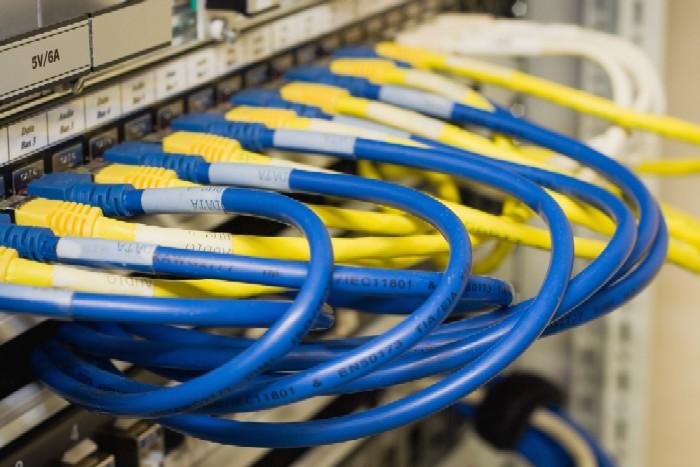Spanning Tree Protocol (STP)
Spanning Tree Protocol (STP)
Spanning Tree Protocol (STP) is a network protocol that prevents loops in a network topology by creating a tree-like structure of connections. STP is defined in the IEEE 802.1D standard and is used in Ethernet networks.
In a network, loops can cause packets to circulate indefinitely, creating congestion and degrading performance. STP creates a logical topology that eliminates loops by blocking redundant paths between switches, thereby creating a single path between any two devices on the network.
STP works by electing a root bridge that becomes the central point of the spanning tree. All other switches in the network calculate the shortest path to the root bridge and use that path for forwarding traffic. STP also monitors the network topology for changes and dynamically reconfigures the spanning tree to account for any new links or failures.
STP has several variants, including Rapid Spanning Tree Protocol (RSTP) and Multiple Spanning Tree Protocol (MSTP), which offer faster convergence and better scalability, respectively.
What are STP port states?
STP port states refer to the different operational states that a port on a switch can be in, based on the Spanning Tree Protocol (STP) algorithm.
There are five possible STP port states:
Disabled: The port is administratively disabled and does not participate in STP.
Blocking: The port does not forward frames but listens for BPDU frames and participates in STP. This state is used to prevent loops by blocking redundant paths.
Listening: The port is not forwarding frames but is actively listening to network traffic and STP messages to detect the presence of loops.
Learning: The port is not forwarding frames but is actively learning the MAC addresses of devices on the network by reading the source address of incoming frames.
Forwarding: The port is fully operational and forwarding frames between switches.
STP transitions ports through these states based on changes in the network topology, such as link failures or new connections. The goal is to maintain a loop-free topology and ensure efficient forwarding of network traffic.
What are STP modes?
- Traditional Spanning Tree Protocol (STP): This is the original STP mode and it uses a tree-like topology to prevent loops. In this mode, only one active path is available for traffic, and all other paths are blocked to prevent loops. This can lead to suboptimal use of network resources, as some links remain unused while others are congested.
- Rapid Spanning Tree Protocol (RSTP): This is an improved version of STP that offers faster convergence times and more efficient use of network resources. RSTP uses a similar tree-like topology, but it enables faster transition to the forwarding state when a network topology changes. This means that unused links can be quickly activated to provide additional bandwidth when needed, while still maintaining a loop-free topology. RSTP also allows for the use of multiple VLANs on a single switch, which is not possible with traditional STP.
There are also other variations of STP, including Multiple Spanning Tree Protocol (MSTP), which allows for multiple spanning tree instances to be created on a single switch, each with its own root bridge and forwarding topology. This provides greater flexibility and scalability in larger networks with multiple VLANs.
Should you enable STP?
Here are some reasons why you should enable STP:
- Prevents network loops: STP prevents network loops by blocking redundant paths, thus ensuring that there is only one active path between any two devices on the network.
- Improves network stability: By preventing loops, STP improves network stability and reliability, reducing the risk of network downtime.
- Supports redundant links: STP enables you to use redundant links in your network, providing backup paths in case of link failures.
- Offers network flexibility: STP enables you to add new devices to the network or change the network topology without causing network loops or disruptions.
Overall, STP is a crucial protocol for any Ethernet network, as it ensures that the network is stable, reliable, and efficient, while also supporting redundant links and providing network flexibility.
Alternatives to Spanning Tree Protocol
- Rapid Spanning Tree Protocol (RSTP): RSTP is an improvement over STP that provides faster convergence times and better scalability. It operates in a similar way to STP, but it allows for faster reconfiguration of the network when a change occurs, leading to less downtime and better network performance.
- Multiple Spanning Tree Protocol (MSTP): MSTP is an extension of RSTP that allows for multiple spanning tree instances to be created on a single switch, each with its own root bridge and forwarding topology. This provides greater flexibility and scalability in larger networks with multiple VLANs.
- Shortest Path Bridging (SPB): SPB is a newer protocol that aims to replace STP and other older bridging protocols. It uses an algorithm that calculates the shortest path between any two devices on the network, which allows for faster convergence times and better use of network resources.
- Transparent Interconnection of Lots of Links (TRILL): TRILL is a protocol that uses a routing algorithm to enable Ethernet switches to forward traffic along the most efficient path. It aims to replace STP and provide better scalability and network performance.
Overall, these alternative protocols offer different advantages over STP, such as faster convergence times, better scalability, and more efficient use of network resources. The choice of which protocol to use depends on the specific requirements of the network and the devices being used.

